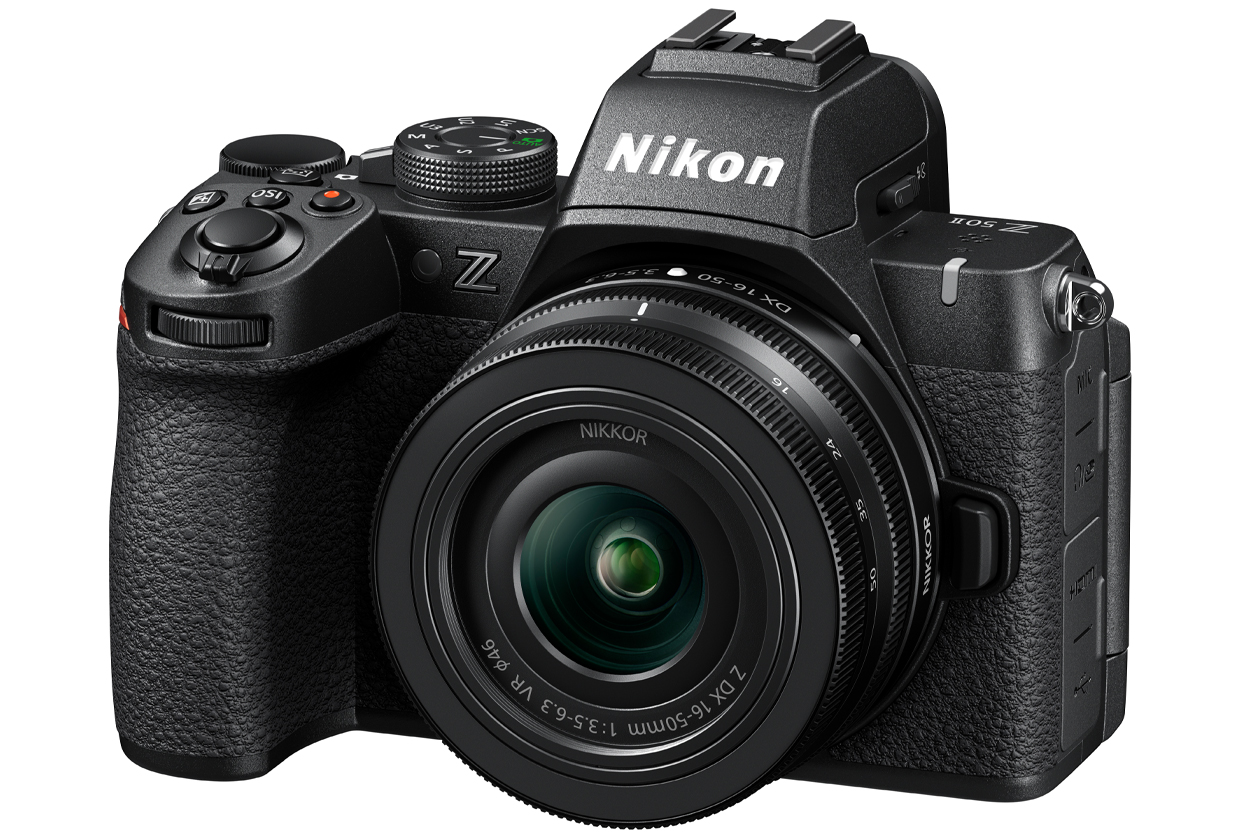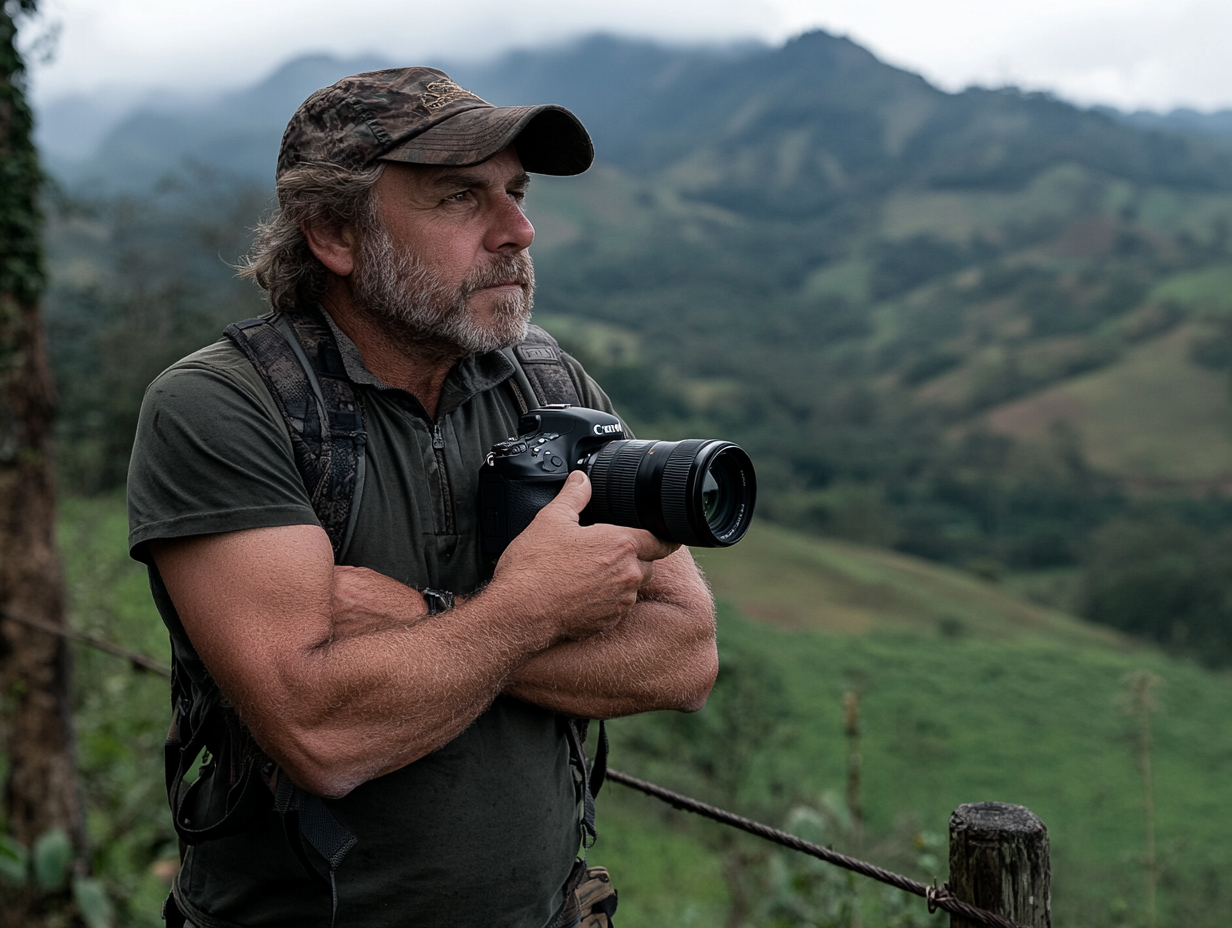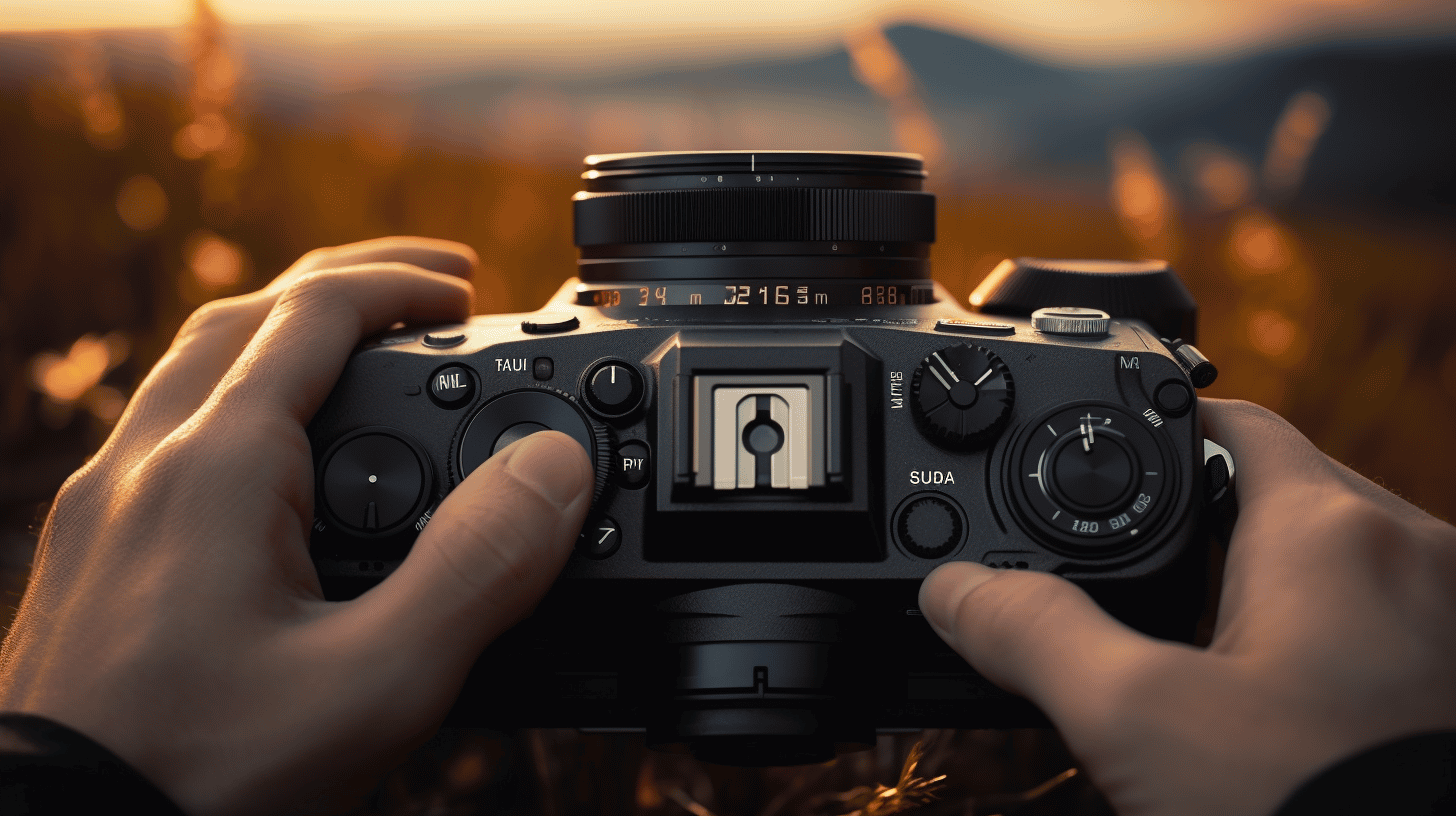In the world of photography, there’s something truly magical about capturing a moment in time with a click of a button. Whether you’re an aspiring professional or simply want to document your life’s adventures, understanding and mastering your camera is essential.
Amateur’s Essentials: Understand and Master Your Camera is your comprehensive guide to unraveling the mysteries of photography. From choosing the right camera to learning the fundamentals of composition and lighting, this article will equip you with the knowledge and skills needed to take your photography to the next level.
So, grab your camera, put on your creative hat, and let’s dive into the fascinating world of photography!
Top Camera Choices for Beginners
If you’re just starting out in photography, finding the right camera can be a daunting task. With so many options available in the market, it’s easy to feel overwhelmed and unsure of where to begin. To help you narrow down your choices, we’ve rounded up the top camera choices for beginners in 2023. Whether you’re a budding photographer looking to dip your toes into the world of photography or a hobbyist looking to upgrade your gear, these cameras are worth considering.
Canon EOS R10 – Top Overall
The Canon EOS R10 is undoubtedly one of the best camera choices for beginners. With its impressive features and user-friendly interface, it strikes the perfect balance between performance and ease of use. Here are some reasons why the Canon EOS R10 stands out:
- Outstanding Image Quality: The Canon EOS R10 boasts a high-resolution sensor, enabling you to capture stunning, detailed images with vibrant colors.
- Advanced Autofocus System: This camera comes equipped with a state-of-the-art autofocus system, ensuring that your subjects are always sharp and in focus, even in challenging lighting conditions.
- Intuitive Touchscreen Interface: The touchscreen interface of the Canon EOS R10 makes navigating through menus a breeze, allowing beginners to quickly adjust settings and capture their desired shots.
- Versatile Lens Options: Canon offers an extensive range of lenses for the EOS R10, allowing you to expand your creative possibilities and experiment with different photographic styles.
Nikon Z8 and Canon EOS R7 – Special Mentions
While the Canon EOS R10 takes the top spot, it’s worth mentioning two other cameras that have caught the attention of beginners and photography enthusiasts alike. The Nikon Z8 and Canon EOS R7 are hailed as top choices in their respective categories. Here’s why:
Nikon Z8:
- High-Resolution Sensor: The Nikon Z8 boasts a staggering megapixel count, delivering exceptional detail and sharpness in every shot.
- Impressive Low-Light Performance: With its advanced low-light capabilities, the Nikon Z8 excels in capturing stunning images in challenging lighting conditions.
- Professional-grade Build Quality: Built to withstand the rigors of outdoor shooting, the Nikon Z8 boasts a durable and weather-sealed body.
Canon EOS R7:
- Superior Video Capabilities: The Canon EOS R7 is a powerhouse when it comes to video recording. With its ability to shoot high-resolution footage and advanced video features, it’s a popular choice among videographers.
- Fast Continuous Shooting: The Canon EOS R7 offers impressive burst shooting capabilities, making it perfect for capturing fast-paced action and sports photography.
- Wireless Connectivity: With built-in Wi-Fi and Bluetooth connectivity, transferring and sharing your images is a breeze with the EOS R7.
Olympus OM-D E-M10 Mark III – Budget-Friendly
For beginners on a budget, the Olympus OM-D E-M10 Mark III is an excellent choice. Despite its affordable price tag, this camera doesn’t compromise on performance. Here’s why the OM-D E-M10 Mark III is a budget-friendly gem:
- Compact and Lightweight: The OM-D E-M10 Mark III is incredibly portable, making it perfect for travel and everyday photography.
- Built-in Image Stabilization: This camera features in-body image stabilization, helping you capture sharp and blur-free images, even without a tripod.
- Artistic Filters and Modes: The Olympus OM-D E-M10 Mark III offers a range of creative filters and shooting modes, allowing beginners to experiment and add their unique touch to their photographs.
No matter your budget or level of expertise, there’s a camera on this list that will suit your needs. Investing in a quality camera is the first step towards honing your photography skills and capturing stunning images. So go ahead, choose the camera that speaks to you, and start capturing memories that will last a lifetime.
Essential Camera Gear for Beginners
When starting out in photography, it can be overwhelming to navigate the world of camera gear. With so many options available, it’s important to understand which items are essential for beginners. From extra batteries and memory cards to tripods and other accessories, there are a few key items that every beginner should have in their camera bag.
Extra Battery and Memory Cards
One of the worst things that can happen to a photographer is running out of battery power or storage space in the middle of a shoot. That’s why it’s essential for beginners to always carry extra batteries and memory cards. Here’s why:
- Extra Batteries: Cameras can consume a lot of power, especially when shooting for extended periods or using advanced features like continuous autofocus. Having extra batteries ensures that you never miss a great shot due to a dead battery. It’s recommended to have at least one extra battery in your camera bag at all times.
- Memory Cards: High-resolution photos and videos take up a lot of space, and beginners often underestimate just how quickly their memory cards can fill up. By having multiple memory cards on hand, you can keep shooting without the worry of running out of space. It’s a good practice to have at least two or three extra memory cards stored safely in your camera bag.
Manfrotto Befree Advanced Tripod
A tripod is an essential tool for any photographer, and the Manfrotto Befree Advanced Tripod is a great option for beginners. Here’s why it’s worth considering:
- Stability: The Befree Advanced Tripod provides a stable base for your camera, reducing camera shake and allowing for sharper images. This is particularly important when shooting in low light or using longer exposure times.
- Portability: The tripod is lightweight and compact, making it easy to carry around during outdoor shoots or when traveling. It folds down to a compact size, making it convenient to fit into your camera bag.
- Versatility: The tripod’s adjustable legs and quick-release plate allow for easy setup and adjustments, giving you more flexibility in capturing different angles and perspectives. It also has a ball head that allows for smooth panning and tilting movements.
Ten Essential Camera Accessories
In addition to the basics, there are several other camera accessories that can enhance your photography experience. Here are ten essential accessories that beginners should consider:
- Camera bag: Invest in a quality camera bag to protect your gear and keep everything organized.
- Lens cleaning kit: Keep your lenses clean and free from dust and smudges for optimal image quality.
- External flash: Improve your lighting conditions in low-light situations or add creative lighting effects.
- Remote shutter release: Allows you to take photos without touching the camera, reducing camera shake.
- Lens filters: Enhance your images by controlling light, reducing glare, or adding creative effects.
- Camera strap: Ensure the safety of your camera while providing comfort during long shooting sessions.
- Lens hood: Minimize lens flare and protect your lens from scratches and damage.
- External hard drive: Backup your photos and videos to avoid data loss.
- Tripod mount ring: Designed for larger, heavier lenses, it helps balance the weight and provides better stability.
- Polarizing filter: Reduces reflections and improves color saturation, particularly useful for outdoor photography.
Must-Have Photography Accessories
As you continue to explore the world of photography, there are a few more accessories that can take your skills to the next level. Here are some must-have photography accessories for beginners:
- Prime lens: A prime lens offers superior image quality and is great for low-light conditions and creating a shallow depth of field.
- External microphone: Improve the audio quality of your videos by using an external microphone.
- Remote flash trigger: Take control of your off-camera flash by using a remote flash trigger.
- Gray card: Ensure accurate color reproduction by using a gray card for accurate white balance.
By investing in these essential camera gear items, beginners can be prepared for various shooting situations and improve their overall photography experience. Remember, starting with the basics is key, and as you grow as a photographer, you can gradually expand your gear collection. Happy shooting!
Understanding Basic Photography Concepts
Photography is an art form that allows us to capture beautiful moments and freeze them in time. Whether you’re just starting out with a new camera or have been snapping pictures for a while, it’s crucial to understand the basic photography concepts that form the foundation of this creative pursuit. In this section, we’ll explore three fundamental concepts: aperture, shutter speed, and ISO.
Aperture
Aperture refers to the opening in the lens through which light passes to reach the camera’s image sensor. Think of it as the “iris” of the camera. The size of the aperture determines how much light enters the camera, as well as the depth of field in your photographs.
- A wider aperture (smaller f-number) lets in more light and creates a shallow depth of field. This is great for portraits, as it helps to isolate the subject from the background, resulting in a beautiful blurred background effect.
- On the other hand, a narrower aperture (larger f-number) allows less light to enter the camera. This is useful in landscape photography, where you want a larger depth of field to capture the details of the entire scene in focus.
Shutter Speed
Shutter speed refers to the amount of time that the camera’s shutter remains open, exposing the image sensor to light. It controls the motion blur in your images and can be adjusted to freeze action or capture motion.
- A fast shutter speed (like 1/1000th of a second) freezes motion, making it ideal for photographing sports events or capturing a bird in flight.
- A slow shutter speed (like 1/30th of a second) allows more time for light to enter the camera, resulting in motion blur. This is great for capturing the smooth, silky flow of waterfalls or creating light trails from moving cars at night.
ISO
ISO refers to the sensitivity of your camera’s image sensor to light. It determines how bright or dark your images will be in different lighting conditions.
- A low ISO setting (like ISO 100) is ideal for bright outdoor environments with plenty of natural light. It produces sharp, noise-free images.
- Increasing the ISO setting (like ISO 800 or higher) allows you to shoot in low-light situations or indoors without a flash. However, keep in mind that higher ISO values can introduce noise and reduce image quality.
Understanding these basic photography concepts is key to taking better photos and unleashing your creativity. Experiment with different combinations of aperture, shutter speed, and ISO to achieve the desired effect in your images. With practice, you’ll gain confidence and start capturing stunning photographs that tell your unique visual story.
For more in-depth information about aperture, shutter speed, and ISO, check out this comprehensive guide to photography basics.
Trends and Techniques in Photography
Photography continues to evolve, thanks to advancements in technology and changing artistic preferences. In this article, we will explore some of the current trends and techniques that are shaping the world of photography. From mobile photography to experimenting with camera angles, and even embracing the charm of real film and neon night photography, there is something for every aspiring photographer to delve into.
Mobile Photography
In recent years, the use of mobile photography technology has experienced a significant advancement. With the emergence of high-quality smartphone cameras and a wide range of photo editing apps, anyone with a smartphone can capture stunning images. The convenience and portability of mobile devices have made it easier than ever to document life’s precious moments.
Mobile photography offers endless creative possibilities and encourages photographers to think outside the box. It allows for instant sharing of images on social media platforms, connecting photographers with a global audience. Whether you’re a beginner or a seasoned photographer, embracing mobile photography can be a game-changer in capturing beautiful and meaningful images.
Exploring Different Camera Angles
One of the keys to capturing visually captivating photographs is to experiment with different camera angles. By changing the perspective, you can transform an ordinary scene into a visually stunning masterpiece. Here are a few camera angle techniques to consider:
- Bird’s-eye view: Capture subjects from a high vantage point for a unique and interesting perspective.
- Low-angle shot: Get down low and shoot upwards to create a sense of grandeur and power.
- Tilted angles: Experiment with tilting the camera to add dynamism and energy to your compositions.
- Wide-angle shots: Use a wide-angle lens to capture expansive scenes and create a sense of depth.
Remember, there are no rules when it comes to exploring camera angles. The key is to unleash your creativity and try new things. Step out of your comfort zone and see the world from a different perspective.
Real Film and Neon Night Photography
In this digital age, it’s refreshing to see a resurgence of interest in shooting with real film. Shooting with film brings a unique and nostalgic quality to photographs, with its distinctive color tones and grain. It requires a more deliberate and thoughtful approach, as each frame is precious, unlike the limitless capacity of digital memory cards.
Neon night photography has also gained popularity in recent years. This technique involves capturing the vibrant lights and colors of urban environments at night, creating a dreamy and surreal atmosphere. By playing with long exposures, photographers can capture mesmerizing light trails and create stunning visual effects.
Both real film and neon night photography offer a departure from the instant gratification of digital photography. They require patience, skill, and a willingness to embrace the unpredictability that comes with shooting in low-light conditions or with film.
In conclusion, the world of photography is constantly evolving, with trends and techniques that cater to a wide range of interests and preferences. Whether you’re drawn to the convenience of mobile photography, the exploration of unique camera angles, or the nostalgic charm of shooting with real film and neon night photography, there’s always something new to discover and experiment with. So grab your camera, step out into the world, and unleash your creativity. The possibilities are endless!
Conclusion
In conclusion, understanding and mastering your camera is essential for any aspiring photographer. By familiarizing yourself with the top camera choices for beginners and investing in essential camera gear, you’ll be well-equipped to capture stunning images. Remember to grasp the basics of photography concepts such as aperture, shutter speed, and ISO, as these form the foundation of your photography journey. Stay updated with the latest trends and techniques in photography to keep your skills fresh and innovative.
If you’re looking to enhance your photography skills further, Wim Arys Photography offers tutorials, reviews, and private sessions to help you navigate the world of photography. Check out their website here and unleash your creative potential with the guidance of a professional photographer.
Frequently Asked Questions
- What are the key concepts I need to understand to master my camera?
Key concepts include understanding exposure (aperture, shutter speed, and ISO), composition techniques, focus, lighting, and different shooting modes available on your camera.
- What settings should I start with as an amateur photographer?
As an amateur, start with ‘Auto’ or ‘Program’ mode to understand your camera’s automatic settings. Gradually experiment with ‘Aperture Priority’ (Av) and ‘Shutter Priority’ (Tv) modes to gain more control over your shots.
- Why is it important to learn about composition in photography?
Understanding composition helps you create visually appealing and balanced photographs. Techniques like the rule of thirds, leading lines, and framing can enhance your images and convey your intended message more effectively.
- How do I improve my photography skills as a beginner?
To improve your photography skills, practice regularly, study photography techniques, analyze the work of professional photographers, join photography communities, and seek feedback on your work.
- What accessories are essential for amateur photographers?
Essential accessories for amateur photographers include a sturdy tripod, camera bag, extra batteries, memory cards, lens cleaning kit, and potentially additional lenses based on your photography interests.




0 Comments